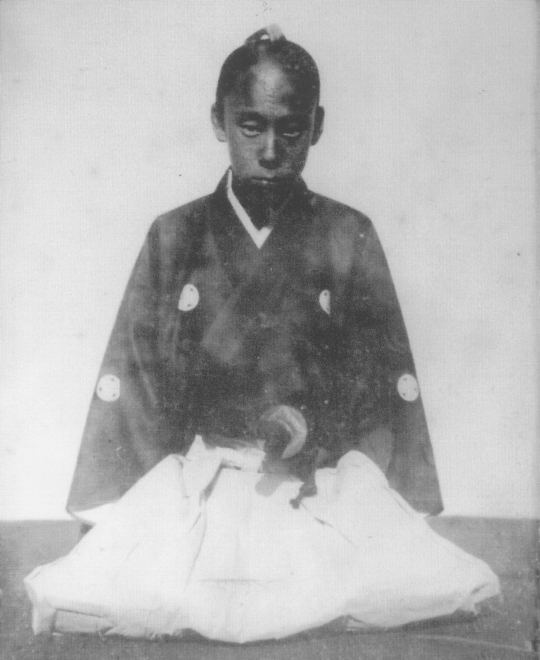Preceded by Matsudaira Sadamichi Nationality Japanese Spouse Matsudaira Hatsuko Succeeded by none Died July 12, 1908 | Role Daimyo Succeeded by Matsudaira Sadanori Name Matsudaira Sadaaki | |
 | ||
Similar People Tokugawa Yoshinobu, Saigo Takamori, Emperor Meiji | ||
Matsudaira Sadaaki (松平 定敬, January 18, 1847 – July 12, 1908) was a Japanese daimyo of the Bakumatsu period, who was the last ruler of the Kuwana Domain. Sadaaki was the adopted heir of Matsudaira Sadamichi, the descendant of Sadatsuna, the third son of Hisamatsu Sadakatsu (1569–1623), who was Tokugawa Ieyasu's brother. His family was known as the Hisamatsu Matsudaira clan. It was to this family that Matsudaira Sadanobu also belonged.
Biography
Matsudaira Tetsunosuke (the future Sadaaki) was born at Ichigaya in Edo, the 8th son of Matsudaira Yoshitatsu, the lord of the Takasu domain. One of his older brothers was Matsudaira Katamori, who later became the lord of Aizu. In 1859, Tetsunosuke was adopted to succeed the newly deceased Matsudaira Sadamichi as lord of the Kuwana Domain. He was betrothed to Sadamichi's 3-year-old daughter Hatsu, thus formalizing the adoption. Coming of age, he took the name Sadaaki.
Sadaaki was the Tokugawa shogunate's last Kyoto shoshidai in the period spanning May 16, 1864 through January 3, 1868. As shoshidai, he supported his brother's work in Kyoto as the Kyoto protector. In 1864, Sadaaki deployed Kuwana troops as part of the shogunate's effort to subdue the Tengu-tō's uprising.
During these years Sadaaki was famous as an avid horseman, and received an imported Arabian horse as a gift from the Shogunate.
Sadaaki fought in the Boshin War (1868-1869), leading Kuwana forces during the fighting in northern Japan. He was together with Katamori until the start of the siege of Aizu, when Katamori asked him to leave and seek reinforcements from the other clans of the Northern Alliance. Sadaaki followed his brother's advice and headed for the Yonezawa Domain. After the fall of Yonezawa and the defeat of the Alliance, Sadaaki embarked on Enomoto Takeaki's warships at Matsushima Bay, and went on to the Ezo Republic. He was brought to Yokohama at the war's end, where he formally surrendered. After a few years in confinement, he was pardoned and released in 1872. It was soon after his release that he finally married Matsudaira Hatsu, who had just turned 16.
Sadaaki joined the Imperial Japanese Army during the Satsuma Rebellion, leading a group of former Kuwana samurai and heading for Kyūshū. Later in life, he served as one of the head priests of Tōshōgū Shrine, along with his brother Katamori, and his brother's former chief karō, Saigō Tanomo. He also lived in Tokyo for some time, and had an avid interest in music; Clara Whitney, an American resident of Tokyo, notes in her diary that he was a skilled organ player.
Sadaaki and Hatsu had two children, Toshi and Masao, both of whom died in infancy. However, Sadaaki also had a concubine; it was this concubine who bore him a son (Sadaharu) who survived to adulthood. He also had a daughter by another woman; this daughter married Sakai Tadakazu.
Sadaaki died at age 61, and is buried in the Somei Cemetery in Tokyo.
